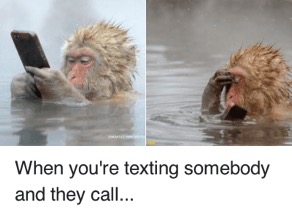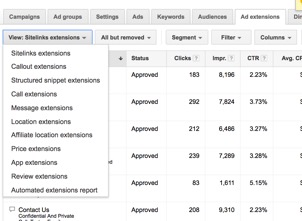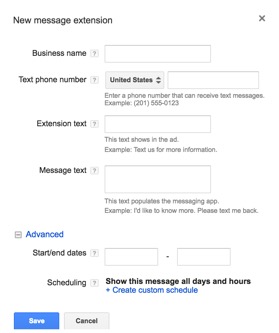Have you ever felt the slow simmering rage from waiting more than a minute for a response from your significant other to your beyond brilliant text message? Or that lingering uncertainty of whether or not you should share that potentially offensive gif in a group text? Despite these micro-moments of apprehension, texting is a dominant form of communication and businesses are trying to assess if this is a viable tool for connecting with customers.
Last year, Google heard the requests for better text tracking tools for text messages and developed the Click-To-Message mobile-only ad extension, which tracks the number of texts that come directly from your paid search ads. This post will walk you through the steps to set up this ad extension and I will discuss tactics for improving your Click-To-Message implementation.
Why Use Click-To-Message
Are you wondering if you should even bother with establishing a text messaging component to your communication channels? I have a checklist of items to consider:
- Do you have a solid mobile experience for your customers? This is a mobile only ad extension and if customers are texting on their mobile phones, they are probably also going to your site to learn more before texting.
- Do you have a good reason to engage via text message? For example, do you have a promotion code unique for paid search clients? Do you want to start a dialogue with a customer in real time? Or do you want to get new subscribers?
- Do you have the capacity on your team to handle another mode of communication? Text messaging is an instant method of generating a relationship with a customer and requires rapid response time.
Here are some statistics to remind you of the importance of using multiple channels for promoting your business: two-thirds of smartphone users say they use text messaging more than 5 times a day. Text messages have a 98% open rate and are usually read within 3 minutes. Additionally, 1 in 5 consumers would rather get a text from a business than an actual phone call which proves we are becoming hermits.

How To Set Up Click-To-Message Ad Extensions
Setting up a Click-To-Message ad extension is a simple 2 step process:
1) Go to the ad extension section of your account and select the message extensions option in the drop down menu:

2) Select all the applicable campaigns and enter the information that you want a customer to receive as an automated, standard introduction text. If you want to set up scheduling for this extension to revolve around when your staff is in the office, use the advanced settings option.

The 4 Tips For Click-To-Message Extension Success
1) Make a good first impression! Your message should be enticing and easy to understand for your intended audience. For example, my client has 2 distinctive age demographics they are attempting to target and the outgoing text message bait that we use for the older audience is more informative, whereas the outgoing message for the younger group is just a picture of a Crying Jordan.

2) If you have a local number, use it. Customers are more comfortable communicating with a business down the street whereas an out-of-state number conjures images of a nefarious entity that is phishing for data.
3) Think about where these texts fit in your lead or sales funnel. Text could be a great starting point for new customers that are too busy to call. Alternatively, text could be a great option for returning customers that know what they want and can convert quickly. Lastly, layering this ad extension with a remarketing campaign can connect you to informed visitors of your site. Remember to adjust messaging.

4) Monitor the volume of conversions you are receiving from the message extension and if you notice that you are not getting as many impressions, or if some messaging text is doing better than others, it might be time to pause the low performers and test some new language or to raise your mobile bid.
The last consideration of this ad extension is that while we can see client engagement through clicks and CTR, we are unable to link these interactions with the ultimate conversion, which may be a purchase.



